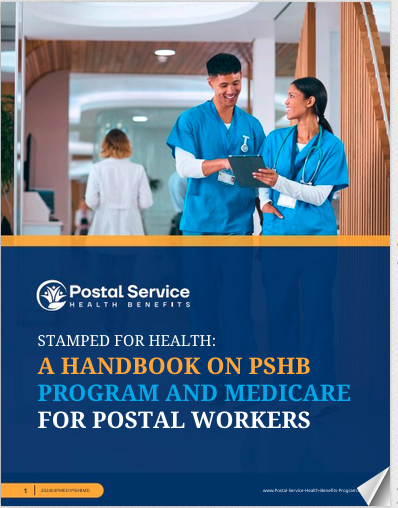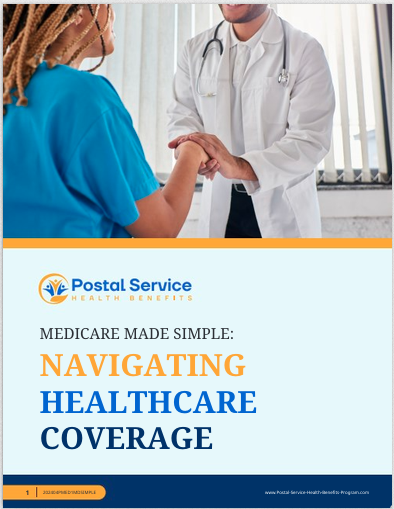Key Takeaways
-
Understanding PSHB copayments can help you make informed decisions about managing healthcare costs effectively.
-
Copayments ensure equitable access to essential health services while balancing affordability and care quality.
Making Sense of Copayments in PSHB Plans
When it comes to healthcare, understanding how copayments work is essential. With the Postal Service Health Benefits (PSHB) program, copayments play a vital role in keeping healthcare affordable and accessible. If you’re a Postal Service employee, retiree, or eligible family member, you’ll encounter copayments for various medical services under your PSHB plan.
This article explores how PSHB copayments work, what you can expect to pay for common services, and tips for managing these costs. Let’s dive in to ensure you’re fully informed about your health benefits.
What Are Copayments, and Why Do They Matter?
Copayments are fixed amounts you pay for specific healthcare services. Unlike deductibles or coinsurance, which depend on total costs or percentages, copayments offer predictability. For instance, when you visit a primary care doctor or pick up a prescription, you’ll typically pay a set amount at the time of service.
Why PSHB Copayments Are Beneficial
-
Affordability: Copayments keep upfront costs predictable, helping you budget for healthcare expenses.
-
Accessibility: Fixed copays ensure you can access necessary services without financial strain.
-
Encouragement: By sharing costs between you and the plan, copayments encourage responsible use of medical services.
Typical PSHB Copayments You Can Expect
PSHB copayments vary based on the service, the plan tier, and whether the provider is in-network or out-of-network. Here’s a breakdown of what you might encounter:
Primary and Specialist Visits
-
Primary Care: Copayments for primary care visits typically range between $20 and $40.
-
Specialists: Visits to specialists may cost slightly more, averaging between $30 and $60 per visit.
Emergency and Urgent Care
-
Urgent Care: Expect copayments of $50 to $75 for urgent care visits.
-
Emergency Room: Emergency services often have higher copays, ranging from $100 to $150.
Prescription Medications
-
Generic Drugs: Lower copays apply, making these medications the most cost-effective option.
-
Brand-Name Drugs: Copayments can be higher for branded prescriptions but remain manageable under most PSHB plans.
Preventive Care Services
Good news! Most preventive care services, such as annual check-ups and vaccinations, are often covered without requiring a copayment.
Factors That Influence Copayment Amounts
In-Network vs. Out-of-Network Providers
Using in-network providers is key to minimizing copayments. In-network providers have agreements with your PSHB plan to offer services at reduced rates. Out-of-network care often results in higher copayments or additional costs.
Service Type and Plan Tier
Your copayment amounts depend on the type of service and the specific PSHB plan you’re enrolled in. Plans with lower premiums may have higher copayments, while those with higher premiums often offer lower out-of-pocket costs.
Medicare Integration
If you’re eligible for Medicare, coordination between Medicare and PSHB can reduce your copayments significantly. Some PSHB plans waive or lower copayments for enrollees who have Medicare Part B.
Tips for Managing PSHB Copayments Effectively
1. Choose In-Network Providers
Always verify that your healthcare providers are in-network to avoid unexpected costs. Most PSHB plans offer easy-to-use directories to help you locate in-network providers.
2. Opt for Generic Medications
Whenever possible, ask your doctor for generic versions of prescribed medications. These often come with significantly lower copayments compared to brand-name drugs.
3. Understand Your Plan’s Preventive Care Benefits
Take advantage of preventive services covered at no additional cost. Regular check-ups and screenings can help you avoid more costly treatments later.
4. Leverage Flexible Spending Accounts (FSAs)
If your plan allows, consider contributing to a Flexible Spending Account. FSAs let you use pre-tax dollars for copayments and other out-of-pocket expenses, saving you money.
When Copayments Add Up: Understanding Annual Out-of-Pocket Limits
While copayments help keep costs manageable, they can accumulate over time. Fortunately, PSHB plans include annual out-of-pocket maximums. Once you reach this limit, the plan covers 100% of eligible costs for the rest of the year. For 2025, these limits range as follows:
-
In-Network Maximum: $9,350
-
Combined In- and Out-of-Network Maximum: $14,000
Tracking your spending ensures you know when you’re nearing this cap, providing relief from additional expenses.
How PSHB Copayments Compare to Other Costs
Understanding copayments in the context of other healthcare costs is vital. Let’s compare copayments with other common cost-sharing methods:
Deductibles
Deductibles require you to pay a set amount before your plan begins covering services. In 2025, in-network deductibles for PSHB plans range from $350 to $2,000, depending on the plan.
Coinsurance
Coinsurance is the percentage of costs you pay after meeting your deductible. For example, PSHB coinsurance typically ranges from 10% to 30% for in-network services.
Balance Billing
Out-of-network providers may bill you for the difference between their charges and your plan’s allowed amount. Staying in-network minimizes this risk.
Navigating Changes and Updates in Copayment Policies
PSHB copayment structures may change annually. Open Season, which runs from mid-November to mid-December, is the ideal time to review and adjust your plan. Ensure your current plan still meets your needs and budget for the upcoming year.
Keep an eye on notifications about changes in copayment amounts, new benefits, or updated provider networks.
The Role of Copayments in Equitable Healthcare
Copayments serve a dual purpose: promoting responsible use of healthcare services while ensuring equitable access. By sharing costs between enrollees and the plan, PSHB copayments strike a balance between affordability and sustainability.
Whether it’s a routine doctor’s visit or an urgent medical need, copayments help keep care within reach for Postal Service employees, retirees, and their families.
Making Your PSHB Plan Work for You
Understanding your copayment responsibilities is key to maximizing your PSHB benefits. From choosing the right providers to tracking your expenses, every step you take toward informed decision-making helps you get the most value from your plan.
By staying proactive and leveraging your plan’s features, you can enjoy peace of mind knowing your healthcare needs are covered without breaking the bank.







